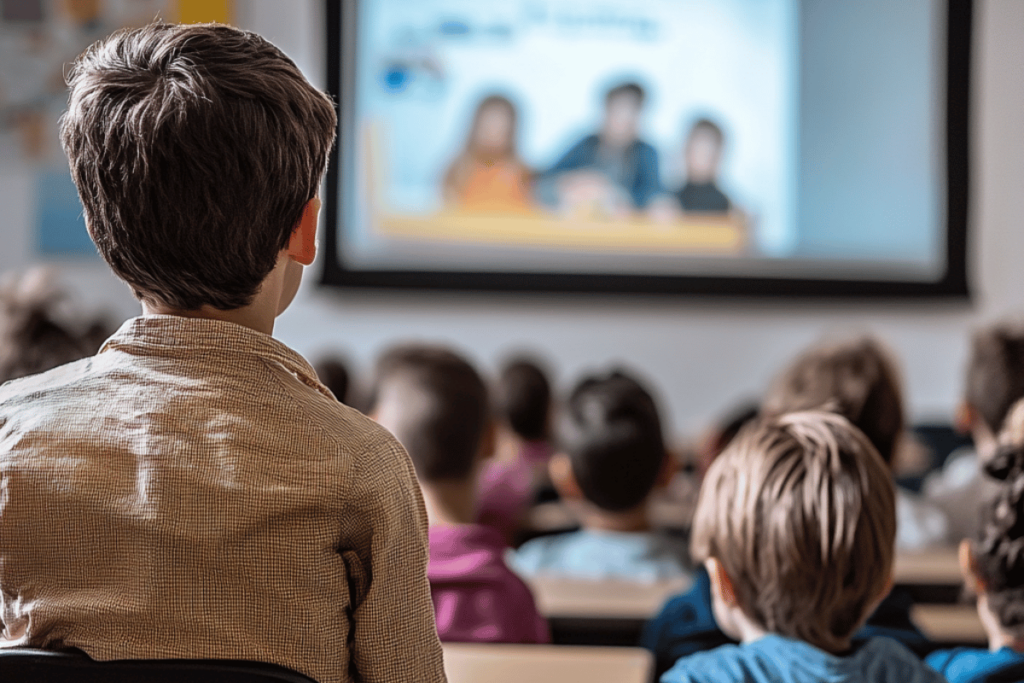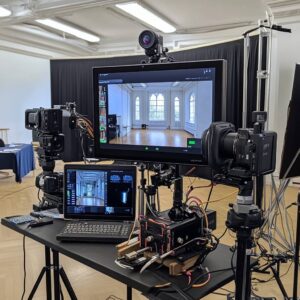Live streaming educational events
Expanding the reach of educational content is crucial in today’s digital age, and live streaming educational events offers a powerful solution. Live streaming allows educators, institutions, and organizations to connect with a broader audience, making education accessible to anyone, anywhere. By harnessing the power of live streaming, educational content can be delivered in real-time to remote participants, breaking down geographical barriers and enhancing engagement. This article explores how live streaming can transform educational events, making them more inclusive and impactful.

Benefits of live streaming for educational events
Live streaming is rapidly becoming a game-changer for educational events, offering a range of benefits that enhance both their reach and effectiveness. By embracing live streaming, educators and organizations can create more engaging, accessible, and impactful learning experiences. Here are some of the key advantages of incorporating live streaming into your educational events:
- Accessibility and convenience
Live streaming eliminates geographical barriers, allowing participants from different locations to join the event. This means learners and attendees can access educational content without the need to travel, making it more inclusive and convenient. - Increased engagement and interaction
Incorporating interactive features such as Q&A sessions, live polls, and chat functions enhances the experience for remote participants. These tools create a dynamic learning environment, encouraging active participation and real-time interaction between presenters and attendees, thereby making the event more engaging and memorable. - Cost-effectiveness
By reducing costs associated with travel, accommodation, and venue hire, live streaming becomes a cost-effective solution for reaching a larger audience. Organizations can host more educational events without the financial burden, making it an economical choice for expanding their reach. - Global reach
Educational content delivered through live streaming can reach a global audience. This is particularly beneficial for institutions and organizations aiming to share knowledge and resources on an international scale. Expanding their influence globally allows them to impact a wider audience and contribute to global education initiatives.
Leveraging these benefits, using live stream can significantly enhance the reach and effectiveness of educational events, making them more accessible, engaging, and impactful.
Key components of successful live streaming
To ensure your live streaming event is successful, it’s essential to focus on several critical components. These elements are the backbone of any high-quality live stream, directly influencing the experience of your audience and the overall impact of your educational content. Let’s explore the key components that will help you deliver a seamless and engaging live streaming event:
- High-quality audio and video
Clear audio and sharp video are essential for maintaining participant engagement. Investing in high-quality microphones and cameras can make a significant difference in the overall experience. Poor audio or video quality can distract and frustrate viewers, reducing the effectiveness of your event. - Reliable internet connection
A stable and robust internet connection is crucial for uninterrupted streaming. Ensure that your venue has sufficient bandwidth to handle the live stream without buffering or connection drops. Testing the connection beforehand can prevent technical issues during the event. - Interactive features
Incorporating interactive elements such as Q&A sessions, polls, and chat functions can greatly enhance the learning experience. These features allow participants to engage with the content and presenters in real-time, fostering a more interactive and dynamic environment. - Recording and archiving content
Recording live sessions allows participants to revisit the content later, which can be particularly beneficial for complex or information-dense events. Archiving these recordings provides a valuable resource for future reference and can be used for on-demand viewing, further extending the reach of your educational content.
Ensuring these key components are in place will help create a seamless and engaging live streaming experience, enhancing the overall quality and impact of your educational events.

Getting started with live streaming educational events
Starting with live streaming educational events may feel overwhelming at first, but with the right planning and tools, you can transform this challenge into a rewarding opportunity. Whether you’re new to live streaming or looking to refine your approach, here’s a few crucial tips to help you get started:
Choosing the right platform
Selecting a reliable streaming platform is crucial. Consider factors such as ease of use, features, scalability, and customer support. Popular options include Zoom, YouTube Live, and Microsoft Teams. Evaluate the specific needs of your event and choose a platform that offers the necessary functionalities.
Preparing content for live streaming
Organize and prepare your content to ensure it is engaging and suitable for a live format. This may include creating slides, videos, and other multimedia elements. Outline your presentation to keep it structured and ensure that all key points are covered. Rehearsing your presentation can also help identify any potential issues and improve delivery.
Promoting the event
Effective promotion is essential to attract participants to your live streaming event. Use various channels such as social media, email newsletters, and your website to spread the word. Provide clear instructions on how to join the event and highlight the benefits of attending. Engaging promotional materials and a strong call to action can significantly boost attendance.
Technical setup and testing
Set up your equipment and test everything well in advance of the event. Check the audio, video, and internet connection to ensure a smooth streaming experience. Conducting a trial run can help identify and resolve any technical issues before the event. Having a technical support plan in place can also be beneficial in case problems arise during the live stream.
By carefully planning and preparing for your live streaming event, you can create a professional and engaging experience for your audience. Following these steps will help ensure that your educational content is delivered smoothly and effectively.
Best practices for live streaming educational content
To ensure your live streaming educational events are as effective and impactful as possible, adhering to best practices is crucial. These practices not only enhance the experience for your audience but also contribute to a smoother, more professional execution. Here are some key strategies to keep in mind as you plan and deliver your live streaming events:
- Engaging the audience
Keep your audience engaged by incorporating interactive elements throughout the event. Encourage questions, conduct live polls, and use the chat function to interact with participants. Personal anecdotes, real-world examples, and dynamic visuals can also help maintain interest and engagement. - Managing technical issues
Technical problems can disrupt the flow of your event and frustrate participants. Have a plan in place to address potential issues quickly. This includes having technical support available during the event, as well as backup equipment and a reliable internet connection. Conducting thorough tests and rehearsals beforehand can minimize the risk of technical difficulties. - Following up after the event
Engage with your audience even after the live event has ended. Send follow-up emails with links to recorded sessions, additional resources, and a thank-you note for their participation. Gathering feedback through surveys can provide valuable insights into what worked well and what can be improved for future events. - Analyzing feedback and performance
Reviewing feedback and performance metrics is crucial for continuous improvement. Analyze data such as viewer numbers, engagement levels, and participant feedback to understand the impact of your event. This information can help refine your approach and make subsequent live streaming events even more successful.
By implementing these best practices, you can ensure that your live streaming educational events are engaging, professional, and impactful. Focusing on audience interaction, technical reliability, and continuous improvement will help you deliver high-quality educational content and expand your reach effectively.

Expand your educational reach with live streaming
Live streaming educational events can significantly enhance the accessibility and impact of your content. By leveraging high-quality audio and video, reliable internet connections, and interactive features, educators and organizations can create engaging and dynamic learning experiences. Whether you’re an educational institution, a corporate trainer, or an event planner, live streaming offers a cost-effective way to reach a global audience.
To get started, choose the right platform, prepare your content thoroughly, promote your event effectively, and ensure your technical setup is robust. Following best practices such as engaging the audience, managing technical issues, and analyzing feedback will help you deliver successful live streaming events.
For professional live streaming solutions tailored to your needs, contact RYGID AV. Our expert team is ready to help you expand your educational reach and connect with a wider audience. Reach out today to learn more about our services and how we can support your educational goals.



